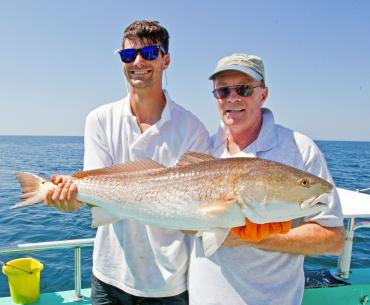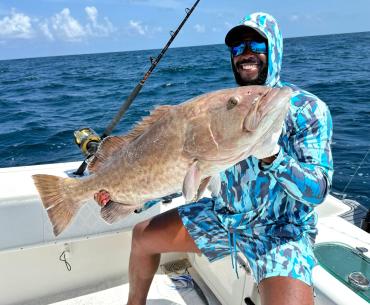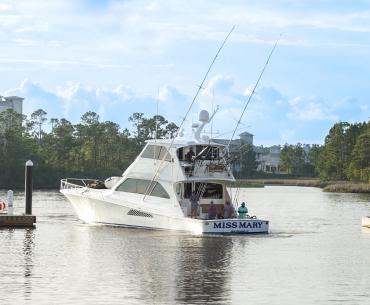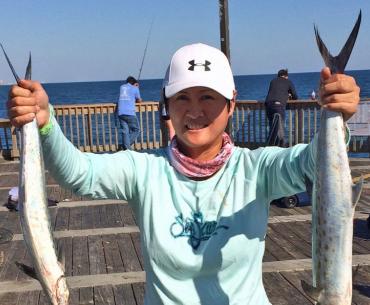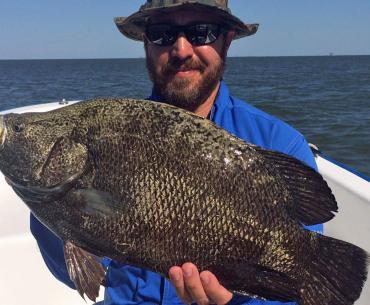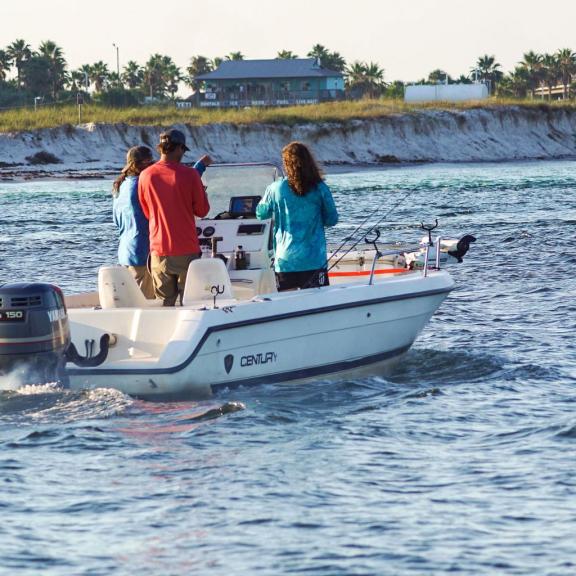
One of the most consistent species inshore anglers can target is the hard-charging and tasty redfish. This fish is a member of the drum family that inhabits the inshore and nearshore waters of Alabama’s beautiful Gulf Coast.
The rebound of the redfish populations along the Gulf is an amazing success story. When late New Orleans Chef Paul Prudhomme introduced the world to blackened redfish, demand for the saltwater species skyrocketed, and commercial harvest decimated the species. However, strict management was instituted, and redfish responded quickly. Now, redfish are abundant in the bays, estuaries, front beaches, and nearshore waters of Alabama.
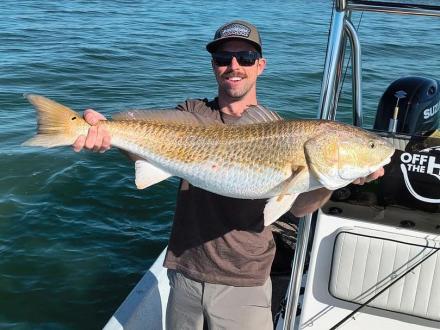
When you’re on the water, always be on the lookout for schooling redfish that are targeting baitfish like menhaden and mullet. If you catch them in a feeding frenzy, it really doesn’t matter what bait you cast in their direction as long as it’s moving. I prefer single hooks, however, because it takes too long to remove treble hooks so you can make the next cast.
Another great thing about redfish is you can catch them in various locations, including ankle-deep water in the estuaries. Here, you can see the fish’s tail fin protruding from the water as it probes for a meal that may include baitfish, small crabs, and shrimp. Redfish will also hang out along the front beach, and surf anglers may hook one at any time of the year. Look for the deeper holes along the beach to find redfish and speckled trout. Both species will hit minnow or shrimp imitation baits, live shrimp, and small croakers.
Redfish in Alabama come in a wide range of sizes, from the legal limit of 16-inch minimum to the bull red size of more than 26 inches. To ensure the redfish population remains robust, Alabama instituted fishing regulations establishing a slot limit on redfish of 16 to 26 inches with a daily bag limit of three fish.
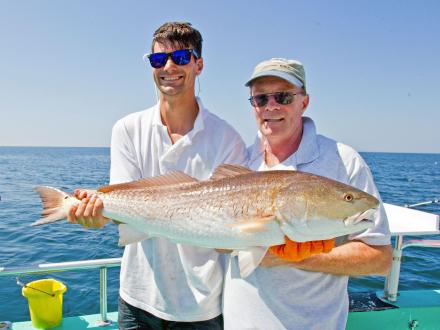
For those who want to test their fishing tackle, take a little boat ride about a quarter mile off the beachfront, looking for schools of reds. Make sure to go down the beach to Dixey Bar, just yards off the Alabama coastline at the tip of the Fort Morgan peninsula.
With a depth that varies from 5 to 10 feet, Dixey Bar is a shallow sand bar on the east side of the Mobile Bay ship channel just off Fort Morgan. On the west side of the bar is the Mobile ship channel, which has plenty of deeper water. On the east side is the Gulf of Mexico. Dixey Bar, named after an 1860 ship that ran aground and broke up during a storm on the bar, is about three miles long. Its width varies greatly, from about two miles wide near Fort Morgan to only a few hundred yards wide as it blends into the Gulf on the south end. When redfish are on the prowl, they move up onto the bar, searching for anything edible. Bait choice isn’t really that important if the fish are hungry.
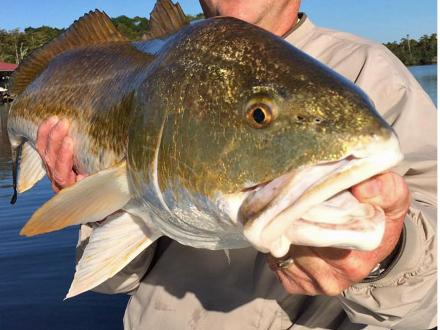
If you’re targeting the bull reds, you'd better not go too light on your fishing tackle. You’ll need a medium-heavy rod and a reel with a dependable drag system, which the bull reds will test immediately after being hooked. I usually won’t go lighter than a 14-pound test line, and most of the time will be spooled with a 20-pound test when I’m fishing the bar. Redfish seem to bite best on a falling tide.
If you’re targeting “stringer” redfish, you can get by with trout tackle with a 10- to 12-pound-test line, but you still need to make sure your drag is working correctly, or you’ll be retying often.
When we have a cold spell, the reds will head into the many river systems along the coast, where much of the bait heads during cooler weather. During warmer weather, which is the norm on the coast, redfish can be found everywhere, making the redfish such a great species to pursue on the beautiful Alabama Gulf Coast.
